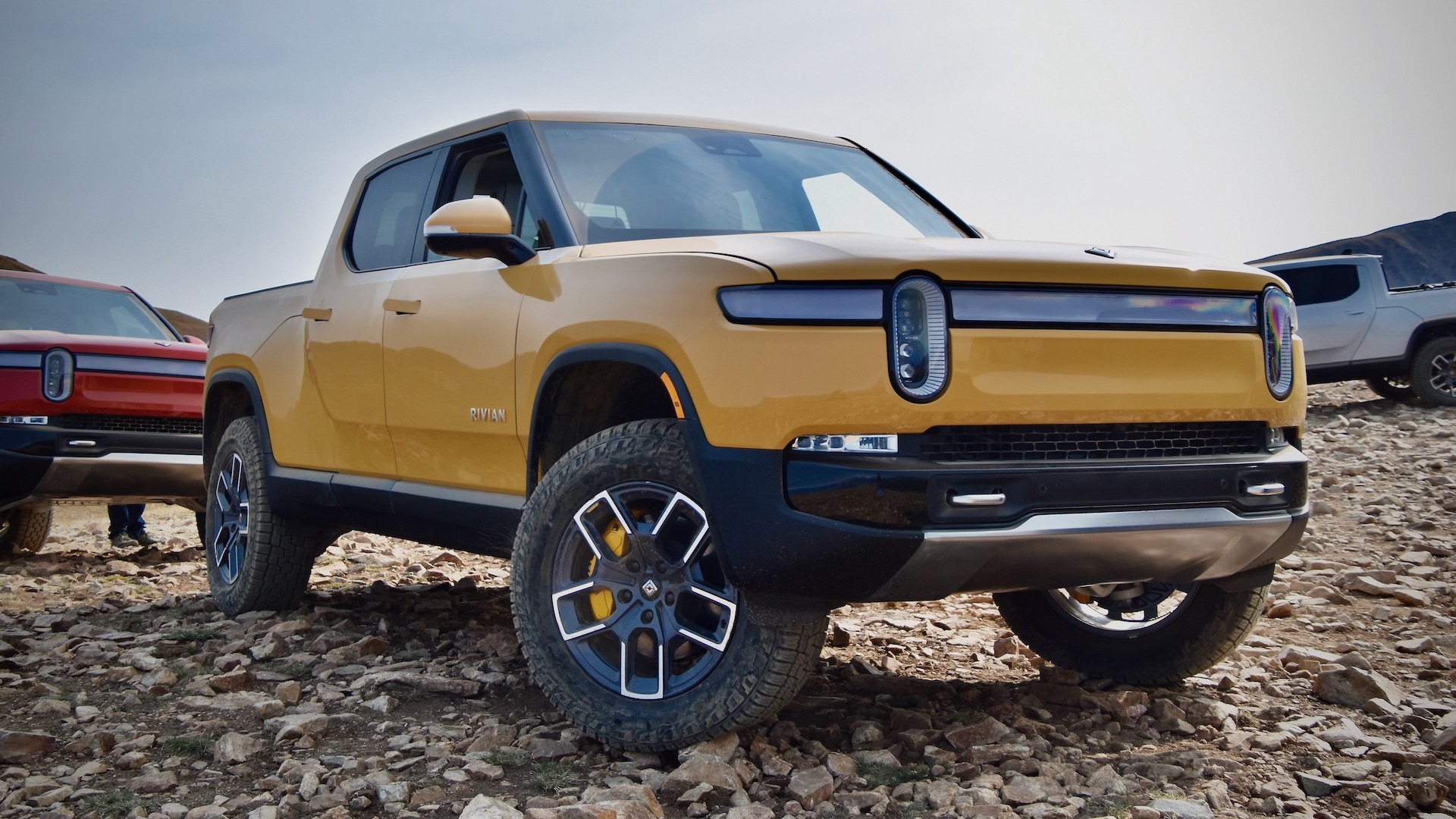

For months now, Rivian owners have debated the cause of a common issue with their electric pickup trucks and SUVs: Rapid front tire wear. Some owners have reported their R1Ts and R1Ses are chewing through tires in as little as 6,000 miles, while other owners have pointed to the driver as being at fault. The complete answer is a bit more complicated, however, because some of the wear appears to be down to the truck’s design—though, the owner plays a big role, too.
Tire wear has been the subject of discussion among Rivian owners since early 2022, mere months after the R1T‘s launch. The community was worried the truck’s roughly 7,000-pound curb weight and extreme torque could cause rapid wear, despite Pirelli covering all of Rivian’s OE tires for at least 50,000 miles. Still, their concerns have been substantiated by owners complaining of accelerated wear, and even having to replace tires much earlier than expected.

In the most extreme case, one owner reported having to replace their front tires after only 6,000 miles. Others speak of replacements by 12,000 miles not being uncommon, as tire wear has become a sore subject that’s a regular source of divisive discourse. But there is a general consensus that the wear problems are linked to Rivian’s range-maximizing “Conserve” mode.
Conserve mode lowers Rivians’ ride heights to improve their aerodynamics, and cuts power to their rear axles to make them front-wheel-drive. (Owners also claim their EVs automatically power down the rear axle above 35 mph in some driving modes.) Remember, that’s on a three-and-a-half-ton all-terrain truck that can make 835 horsepower in quad-motor configuration. In other words, it may be laying down up to 418 hp through the front axle. That’s bound to cause uneven wear, and according to one owner who tested Conserve over a 6,000-mile road trip, it does: it wore an extra millimeter of tread off the front tires.
Channeling all a Rivian’s power through its front wheels may not be the only reason Conserve doesn’t conserve the tires, too. An evaluation of Rivian’s height-adjustable air suspension posted to Reddit indicates R1s develop slight toe-in and significant negative camber in their lowered setting. Camber can cause uneven wear, but doesn’t necessarily accelerate it. Toe, meanwhile, is an infamous tire-killer.
Put simply, toe is whether your tires point inward or outward from their parallel paths. Toe-in like Rivians apparently develop in Conserve can be thought of as pizza to french fries—it sacrifices agility for stability, but like all non-zero toe settings, it also increases wear. This may be why Rivian owners claim they have been told to avoid using Conserve for extended periods, as it trades battery efficiency for worse tire life. (At least, with the stock alignment, but we’ll talk about that later.)
Those stock alignments don’t always seem to be so great, either. There are numerous accounts on owners‘ forums and social media indicating alignment issues are common, in particular a pull to the right.

In summary, evidence suggests Rivians wear their tires more quickly in Conserve mode, not just because they decouple their rear axles, but because of how lowering the suspension alters their alignments. Leaving the factory with a bad alignment (or being driven by an owner with a lead foot) would only expedite tire wear, too.
However, beyond the apparent prevalence of poor factory alignments, this isn’t an indictment of Rivian. All vehicles’ suspensions are designed to adjust alignment with suspension travel, and the effects of that are most prevalent on height-adjustable vehicles like Rivians. The toe change could be engineered out, but that’d likely worsen handling. It’s a game of trade-offs.
There are ways to prolong tire life without reducing use of Conserve mode, too. Regular tire rotations are a must on all cars to distribute tire wear evenly, preserving handling characteristics and prolonging tire life. Additionally, owners who want to use Conserve mode most of the time could request a slight toe-out from factory settings to offset the mode’s alignment changes. Also, they should stay light on the throttle. With all that advice heeded, there should be no reason for a Rivian to wear through tires quicker than expected, 835 horsepower or not.
Got a tip or question for the author? You can reach them here: james@thedrive.com